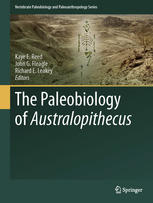

Most ebook files are in PDF format, so you can easily read them using various software such as Foxit Reader or directly on the Google Chrome browser.
Some ebook files are released by publishers in other formats such as .awz, .mobi, .epub, .fb2, etc. You may need to install specific software to read these formats on mobile/PC, such as Calibre.
Please read the tutorial at this link: https://ebookbell.com/faq
We offer FREE conversion to the popular formats you request; however, this may take some time. Therefore, right after payment, please email us, and we will try to provide the service as quickly as possible.
For some exceptional file formats or broken links (if any), please refrain from opening any disputes. Instead, email us first, and we will try to assist within a maximum of 6 hours.
EbookBell Team

4.4
102 reviewsAustralopithecus species have been the topic of much debate in palaeoanthropology since Raymond Dart described the first species, Australopithecus africanus, in 1925. This volume synthesizes the geological and paleontological context of the species in East and South Africa; covers individual sites, such as Dikika, Hadar, Sterkfontein, and Malapa; debates the alpha taxonomy of some of the species; and addresses questions regarding the movements of the species across the continent. Additional chapters discuss the genus in terms of sexual dimorphism, diet reconstruction using microwear and isotopic methodologies, postural and locomotor behavior, and ontogeny.